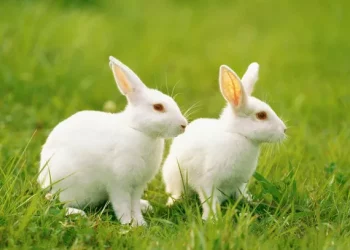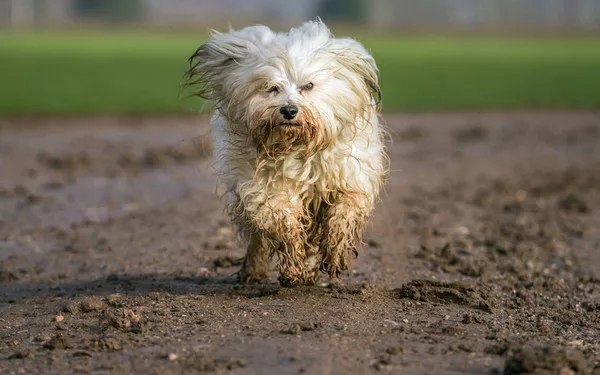Wild cottontail rabbits (Sylvilagus floridanus) are enchanting creatures that inhabit a diverse range of environments, from meadows and fields to woodlands and deserts. As herbivores, their diet plays a crucial role in their survival and overall well-being. Understanding what wild cottontail rabbits like to eat is essential for conservation efforts, habitat management, and fostering a deeper appreciation for these charismatic lagomorphs.
I. Anatomy of Wild Cottontail Rabbits
Before delving into their dietary preferences, it’s imperative to grasp the physiological and anatomical aspects that influence what wild cottontail rabbits eat. These creatures have specialized teeth, a digestive system geared towards processing fibrous plant material, and keen senses that aid in foraging for the right food sources.
Dental Adaptations for Herbivory
Wild cottontail rabbits have continuously growing incisors, allowing them to gnaw on vegetation and abrasive materials to maintain dental health. This unique dental adaptation influences the types of food they consume.
Digestive System Characteristics
Their digestive system is designed for processing fibrous plant material efficiently. A large cecum, a part of the hindgut, facilitates the fermentation of cellulose with the help of microorganisms, enabling the extraction of nutrients from tough plant fibers.
II. Natural Diet of Wild Cottontail Rabbits
In the wild, cottontail rabbits exhibit a diverse and adaptable dietary behavior based on the availability of vegetation in their habitats. Examining their natural diet provides insights into the kinds of food they prefer and depend on.
Grasses and Forbs
Cottontail rabbits are avid consumers of grasses and forbs, forming a substantial portion of their diet. This includes various species of grasses, clover, dandelions, and other broad-leaved plants commonly found in meadows and fields.
Bark and Twigs
During the winter months when fresh green vegetation is scarce, wild cottontail rabbits resort to consuming bark and twigs from shrubs and small trees. This behavior is a testament to their adaptability in the face of changing environmental conditions.
Herbaceous Plants and Vegetables
The diet of wild cottontail rabbits often includes herbaceous plants and vegetables. They may feed on the leaves of plants like wild lettuce, plantain, and chickweed, adding nutritional variety to their intake.
III. Seasonal Variations in Dietary Preferences
Understanding the seasonal variations in wild cottontail rabbit diets is crucial for wildlife enthusiasts, ecologists, and conservationists. Rabbits adjust their food choices based on the changing availability of vegetation throughout the year.
Spring and Summer Diet
During the spring and summer months, wild cottontail rabbits benefit from an abundance of fresh green vegetation. Their diet primarily consists of tender grasses, clover, and a variety of forbs. This period is crucial for breeding and raising offspring, demanding a nutrient-rich diet.
Fall Diet Transition
As fall approaches, the availability of certain plants may decline. Cottontail rabbits respond by incorporating more woody vegetation into their diet, preparing for the winter months when fresh greenery becomes scarce.
Winter Diet Challenges
Winter poses challenges for wild cottontail rabbits as snow cover and freezing temperatures limit access to their usual food sources. During this season, they resort to consuming bark, twigs, and any available dried plant material to sustain themselves until spring.
IV. Environmental Factors Influencing Dietary Choices
The dietary preferences of wild cottontail rabbits are not only influenced by seasonal changes but also by the specific environment they inhabit. Factors such as habitat type, vegetation composition, and human activities play a significant role in shaping their diet.
Habitat Types and Preferences
Different species of cottontail rabbits may inhabit various habitats, including grasslands, shrublands, and forests. Understanding the specific vegetation composition of these habitats helps predict the primary food sources available to wild cottontail rabbits in different regions.
Human-Induced Changes
Human activities can alter the landscape and impact the availability of food for wild cottontail rabbits. Urbanization, agriculture, and deforestation can lead to habitat fragmentation and changes in vegetation, influencing the dietary choices of these rabbits.
V. Dietary Adaptations and Survival Strategies
Wild cottontail rabbits showcase remarkable adaptations and survival strategies related to their dietary habits. These adaptations have evolved over time, allowing them to thrive in diverse ecosystems and cope with the challenges posed by changing seasons and environmental conditions.
Coprophagy: Recycling Nutrients
One notable adaptation is coprophagy, the consumption of their own fecal pellets. Cottontail rabbits produce two types of fecal pellets – soft, nutrient-rich pellets and hard, indigestible pellets. By consuming the soft pellets directly from the anus, rabbits can reabsorb essential nutrients that were not fully absorbed during the initial digestion.
Nocturnal Feeding Behavior
To avoid predators and human disturbances, wild cottontail rabbits often exhibit nocturnal feeding behavior. This adaptation allows them to forage under the cover of darkness, minimizing the risks associated with daylight activities.
See Also:What to Feed a Malnourished Rabbit?
VI. The Impact of Diet on Reproduction and Population Dynamics
The dietary preferences of wild cottontail rabbits have direct implications for their reproductive success and population dynamics. A well-balanced and diverse diet is crucial for maintaining healthy populations and ensuring the sustainability of their ecosystems.
Nutrient Requirements for Reproduction
During the breeding season, female cottontail rabbits have increased nutritional demands to support gestation and lactation. A diet rich in protein, vitamins, and minerals becomes essential for successful reproduction.
Population Fluctuations and Food Availability
The availability of food resources directly influences the population dynamics of wild cottontail rabbits. In years of abundant vegetation, populations may increase, while periods of food scarcity can lead to population declines.
VII. Conservation Implications and Management Strategies
Conserving wild cottontail rabbit populations requires a comprehensive understanding of their dietary preferences and the factors influencing their habitat. Implementing effective management strategies is crucial for ensuring the long-term survival of these charismatic lagomorphs.
Habitat Preservation
Preserving diverse habitats with a rich array of vegetation is fundamental for supporting wild cottontail rabbit populations. Efforts to protect natural areas and prevent habitat degradation contribute to maintaining suitable foraging grounds.
Vegetation Management
In certain cases, vegetation management practices may be employed to enhance rabbit habitats. This includes strategies such as controlled burns, which can promote the growth of fresh, nutritious vegetation preferred by cottontail rabbits.
Mitigating Human-Induced Disturbances
Minimizing human-induced disturbances, such as habitat destruction and fragmentation, is essential for ensuring the well-being of wild cottontail rabbits. Education and awareness programs can help promote responsible land use practices.
Conclusion
Wild cottontail rabbits, with their endearing appearance and fascinating behaviors, are an integral part of ecosystems across diverse habitats. Their dietary preferences, shaped by evolutionary adaptations and environmental factors, highlight the interconnectedness of species and their ecosystems. As we strive to conserve and coexist with these enchanting lagomorphs, understanding what wild cottontail rabbits like to eat is a crucial step towards fostering harmony between humans and wildlife.
Related Topics:
Do Wild Rabbits Consume Timothy Hay?
Can Wild Rabbits Safely Consume Pet Rabbit Food?
Can Wild Rabbits Safely Consume Dog Food?



























